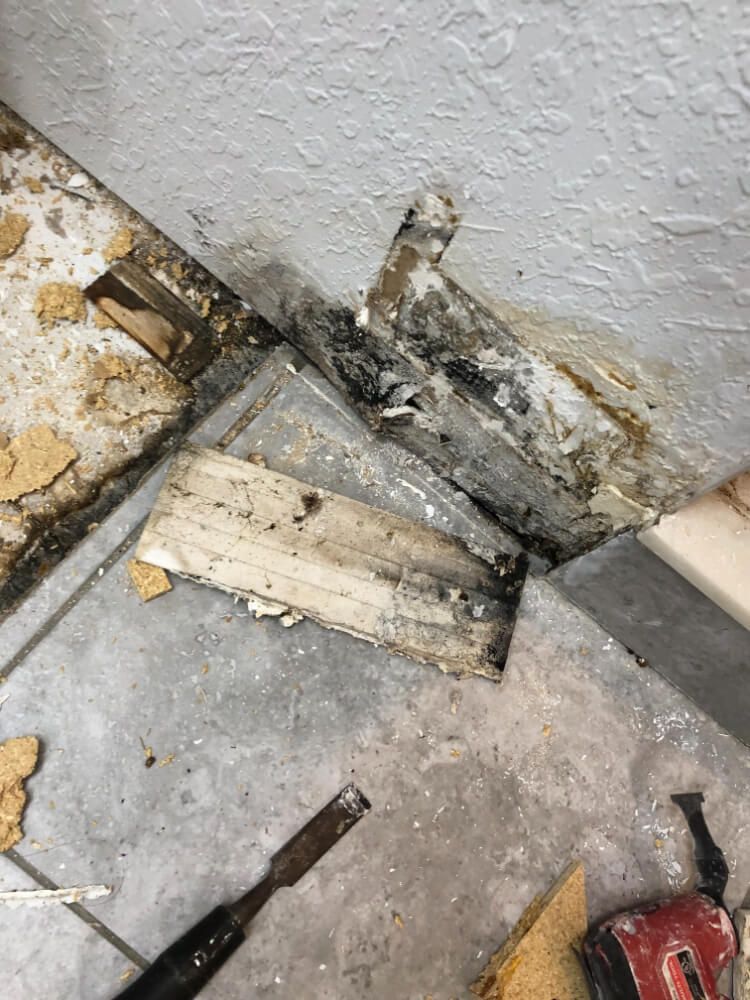Mold Testing Near Me: Identifying and Addressing Mold Issues

Mold is the unwelcome moisture-loving fungus that can cause various problems in our homes. Mold growth is a frequent occurrence and may directly affect our health which is why identifying and addressing mold issues promptly is beneficial for a healthy living environment.
Mold testing involves a distinct process compared to regular mold and housing inspections. Finding experts for mold testing near me is essential to detect and removing mold quickly and efficiently. Let’s explore the circumstances that may require a mold inspection and the purpose of mold testing.
Understanding Mold and Its Potential Dangers
Mold, being a type of fungus, thrives in damp environments. Its reproduction process includes releasing tiny spores into the air that will in time settle on surfaces. Mold spores are found everywhere making it nearly impossible to completely eliminate them from a house without the aid of advanced tools.
Fortunately enough, mold spores transform into mold only when they encounter a moist surface. This implies that maintaining a dry interior environment is a step closer to effectively preventing issues with mold.
Situations Requiring Mold Inspection and Testing
Mold inspections are done based on needs. Recognizing the signs of mold formation is crucial to preventing further spread and damage. If you come across visible emergence of green, blue, black, or white substances growing anywhere in your house, they may be signs of mold. Also, look out for musty odor, water stains, or peeling paint. Taking action, in this case, is required to determine the extent of the problem.
However, mold can also thrive in concealed areas, like ducts or between walls, forming colonies so minuscule that are very hard to detect. Here are several scenarios where a mold inspection is a must.
- Mold inspections are a must when buying a new home. It’s the only way to determine whether mold is present in the property.
- Inspect the house for mold if you’ve had situations with water damage (flooded basement, leaking roof, or broken pipe). Damp areas that didn’t dry properly and quickly could be susceptible to mold contamination.
- If household members experience unexplained health issues like allergies, respiratory problems, or persistent symptoms when in a specific area of the house, mold may be a contributing factor. Mold has the potential to release spores and mycotoxins that cause allergies or asthma symptoms, respiratory problems, and other health issues.
- Internal humidity that leads to mold growth can occur during extended periods of not occupying a house. This presents a real challenge in warmer regions with high humidity levels.
Difference Between Mold Inspection and Mold Testing
Mold inspection and testing may seem the same thing, but in reality, there are slight differences between them. Mold inspection is a comprehensive assessment of a property that involves identifying:
- mold presence
- the extent of mold growth
- the potential moisture sources that contribute to mold development.
A mold inspector will use moisture meters and thermal imaging cameras to detect hidden moisture issues. They also gather information about the property’s history of water damage or previous mold remediation efforts.
On the other hand, mold testing involves collecting samples to gather information about mold species, spore count, and potential allergenic or toxic properties. It helps identify the extent of mold contamination, assess indoor air quality, and determine if the mold poses health risks.
There are different ways of executing mold testing, and each has its advantages. A professional mold testing service can recommend which one of the following mold testing types is most suitable for your situation:
- Air sampling collects and analyzes airborne mold spores
- Surface sampling involves swabbing or tape-lifting to collect samples from visible mold growth
- Bulk sampling is used when materials suspected of harboring mold need to be tested.
Taking Action Based on Mold Testing Results
Mold testing is particularly useful in cases where there are no visible signs of mold. It helps identify hidden mold growth, assess indoor air quality, and determine the necessary remediation steps.
Once you receive the mold test results, consult with a professional mold removal specialist to develop an appropriate action plan. Depending on how severe the mold problem is, they may need to clean, dry, and repair affected areas. They will also address any underlying moisture issues to prevent future mold growth.
Ways to Prevent Mold
The key to mold prevention lies in promptly cleaning up spills and repairing roof or plumbing leaks. It requires diligent efforts to control moisture levels and create an environment unfavorable for mold to thrive. Here are some effective ways to prevent mold:
- Improve ventilation: The most important factor is ensuring thorough and proper ventilation in your kitchen and bathroom to remove moisture. Reduce moisture buildup and ensure adequate airflow by keeping windows open, using fans, and allowing air to circulate freely.
- Monitor and control indoor humidity: Keep indoor humidity levels between 30% and 60% to discourage mold growth. Use dehumidifiers in areas prone to high humidity, such as basements and bathrooms. Fix any plumbing leaks or water seepage issues promptly.
- Monitor and address condensation: Insulate windows, pipes, and other surfaces prone to condensation. Keep an eye out for any condensation on windows, walls, or other surfaces. Address the underlying cause of excessive condensation, such as poor insulation or inadequate ventilation.
- Promptly address water damage: Address water damage, such as leaks or spills, immediately and thoroughly dry and clean affected areas. Consider hiring professionals for extensive water damage restoration.
- Use mold-resistant materials: When renovating, use mold-resistant drywall or paint. These materials are designed to inhibit mold growth and can be particularly useful in moisture-prone areas.
- Reduce clutter: Cluttered areas can impede proper airflow and provide hiding spots for mold. Keep your home well-organized and minimize clutter to promote ventilation and make cleaning easier.
Final Words
Mold occurrence is a serious situation that can lead to even more serious problems. Spotting mold contamination on time can save you lots of time, money, and nerves. That is why mold testing is a crucial step in identifying and addressing mold issues in your home or workplace.
Once you recognize signs of mold growth, take proactive measures to ensure a healthy living environment. Finding the right service that professionally executes mold testing, remediation, and removal is crucial in avoiding potential health risks and extensive property damage caused by mold.

Other Blogs You May Be Interested In
Categories







